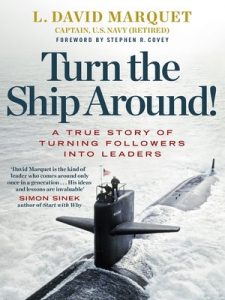
A person’s sense of control or autonomy is strongly correlated with creativity and innovation. Indeed, it is a fundamental human need to want to control (stronger for some than others). Many organizations (e.g. military, large organizations) are highly structured command-and-control environments, with a clear chain of command, and top down, centralized decision-making. It can be tough for managers to give up control in such environments. Employees are often conditioned not to think for themselves and do as they are told. Disengagement ensues. Creativity and innovation suffer. 
Yet, even in the most tightly controlled environments, such as the US Navy, leaders have found success empowering their organizations. As David Marquet discusses in his book, Turn the Ship Around, empowering others in an organization that is conditioned to just do as they are told is difficult, but possible. As commander of the Sante Fe nuclear submarine, Marquet was able to lead the Santa Fe from worst in fleet to best in fleet by empowering others and delegating decision authority.
How did he do it? Marquet discusses the 3 C’s necessary for empowerment. First, your people need clarity. There needs to be a clear vision and purpose–what is our mission, what are we trying to accomplish, why? Second, your people need competence. You can have all of the motivation in the world, but without competence, that job or mission will fail. Give your people the necessary training and support to handle the job. Finally, with clarity and competence, you are ready give control–the third C. This is the essence of leadership–empowering and delegating control to others, developing them into capable leaders.
So, the next time you want to empower your team, remember — Clarity, Competence, Control.


